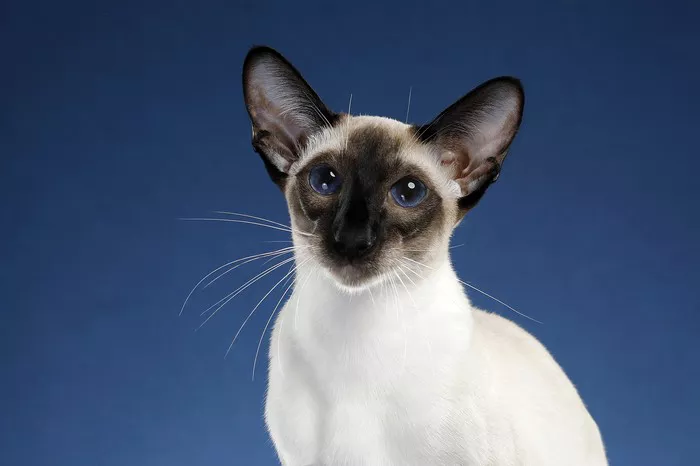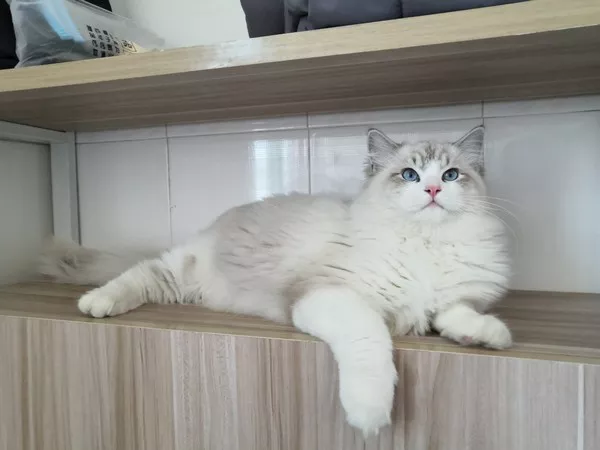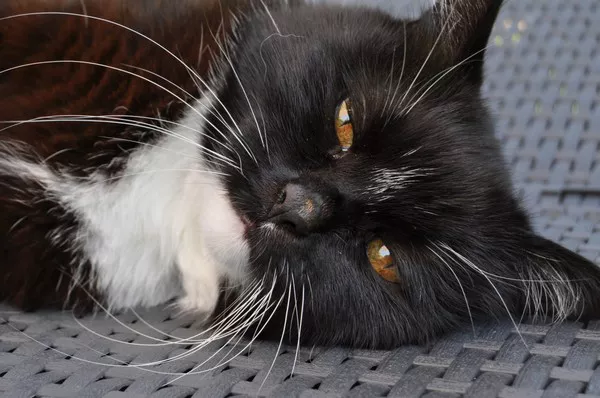Siamese cats are renowned for their striking appearance, characterized by a sleek, pale body contrasted with darker points on their face, ears, legs, and tail. This distinctive coloration, known as the colorpoint pattern, has fascinated cat lovers for centuries. But how do Siamese cats get their unique coat colors? In this comprehensive guide, we will explore the genetic mechanisms behind Siamese cat coloration, including the role of temperature sensitivity, colorpoint variations, genetics and inheritance, and additional insights into this fascinating feline breed.
The Siamese Gene and Temperature Sensitivity
At the heart of Siamese cat coloration lies a remarkable genetic trait: the Siamese gene, also known as the colorpoint gene. This gene is responsible for encoding an enzyme involved in melanin production, the pigment that gives color to a cat’s fur, skin, and eyes. However, what sets the Siamese gene apart is its temperature sensitivity.
In Siamese cats, the enzyme encoded by the Siamese gene is less active in warmer areas of the body and more active in cooler areas. As a result, areas of the body with lower temperatures, such as the face, ears, legs, and tail, produce more melanin, leading to darker pigmentation. Conversely, areas with higher temperatures, such as the torso, exhibit lighter coloration due to reduced enzyme activity.
This temperature-dependent variation in enzyme activity is the key to the striking contrast between the darker points and lighter body of Siamese cats, a phenomenon known as the Himalayan pattern.
Colorpoint Variations
While the classic Siamese colorpoint pattern is characterized by seal point markings (dark brown points on a pale beige body), there are several variations found in Siamese cats, each with its own unique point colors:
1. Seal Point: Dark brown points on a pale beige body.
2. Chocolate Point: Dark chocolate points on a lighter tan body.
3. Blue Point: Slate blue points on a silvery blue body.
4. Lilac Point: Pinkish-gray points on a frosty white body.
5. Flame Point: Orange-red points on a cream-colored body.
These variations arise from different genes interacting with the Siamese gene, resulting in subtle differences in coat coloration. Additionally, other genes can influence coat patterns and eye color, further adding to the diversity seen in Siamese cats.
Genetics and Inheritance
Understanding the genetics behind Siamese cat coloration requires delving into the principles of inheritance. The Siamese gene is a recessive gene, meaning that both parents must carry the gene for a kitten to exhibit the colorpoint pattern. If only one parent carries the gene, the offspring will have a solid coat color without points.
When two Siamese cats with the colorpoint gene breed, they can produce kittens with a variety of point colors, depending on the combination of genes inherited from each parent. This genetic interplay results in the wide range of colorpoint variations observed in Siamese cats.
Visuals
To aid in understanding the complex genetic mechanisms and variations in Siamese cat coloration, visuals can be invaluable. Including images of Siamese cats with different point colors allows readers to visualize the range of colorpoint patterns. Additionally, diagrams or infographics can help illustrate the temperature-sensitive enzyme activity and genetic inheritance patterns in a clear and accessible manner.
Additional Information
Beyond the genetic intricacies of Siamese cat coloration, there is much more to explore about this beloved breed. Briefly discussing the history and origin of the Siamese breed provides context for its development and popularity. Additionally, mentioning other cat breeds that exhibit the colorpoint pattern due to similar genetic mechanisms, such as the Himalayan and Balinese breeds, highlights the broader significance of these genetic traits in feline genetics.
For readers interested in delving deeper into feline genetics or learning more about Siamese cats, providing links to resources such as official breed websites, online forums, and educational materials can serve as valuable starting points for further exploration.
In conclusion, the distinctive coloration of Siamese cats is a testament to the fascinating interplay of genetics and temperature sensitivity. By unraveling the mysteries behind Siamese cat coloration, we gain a deeper appreciation for this iconic breed and the intricate genetic mechanisms that shape its appearance.
FAQs:
1. What is the rarest Siamese cat color?
The rarest Siamese cat color is generally considered to be the lilac point. Lilac point Siamese cats have a pale, pinkish-gray body with darker lilac-colored points on their ears, face, paws, and tail. This coloration is the result of a dilution of the chocolate gene, producing a unique and striking appearance. Lilac point Siamese cats are less common than their more traditional seal, chocolate, and blue point counterparts, making them highly sought after by breed enthusiasts and collectors. Their distinctive coloring and elegant appearance make them prized among Siamese cat fanciers.
2. Why is my Siamese cat’s fur getting darker?
The phenomenon of a Siamese cat’s fur getting darker over time is known as “point darkening.” Point darkening occurs naturally as Siamese cats age due to a combination of factors, including exposure to sunlight and changes in body temperature. The enzymes responsible for producing pigment in the fur become more active over time, causing the coloration of the points (ears, face, paws, and tail) to deepen and intensify. While this process is a normal part of aging for Siamese cats, it’s essential to monitor any changes in your cat’s fur coloration and consult with a veterinarian if you notice any significant or concerning developments.
3. Do kittens get their color from mom or dad?
The color of a kitten’s fur is determined by a combination of genetic factors inherited from both parents. Each parent contributes one allele (or version) of the gene responsible for coat color, resulting in a unique combination in their offspring. In most cases, the expression of certain coat colors and patterns is influenced by multiple genes, making it challenging to predict the exact appearance of a kitten based solely on its parents’ colors. While kittens may inherit specific traits from either parent, including coat color, the outcome can vary widely, leading to a diverse range of colors and patterns within a litter.


























